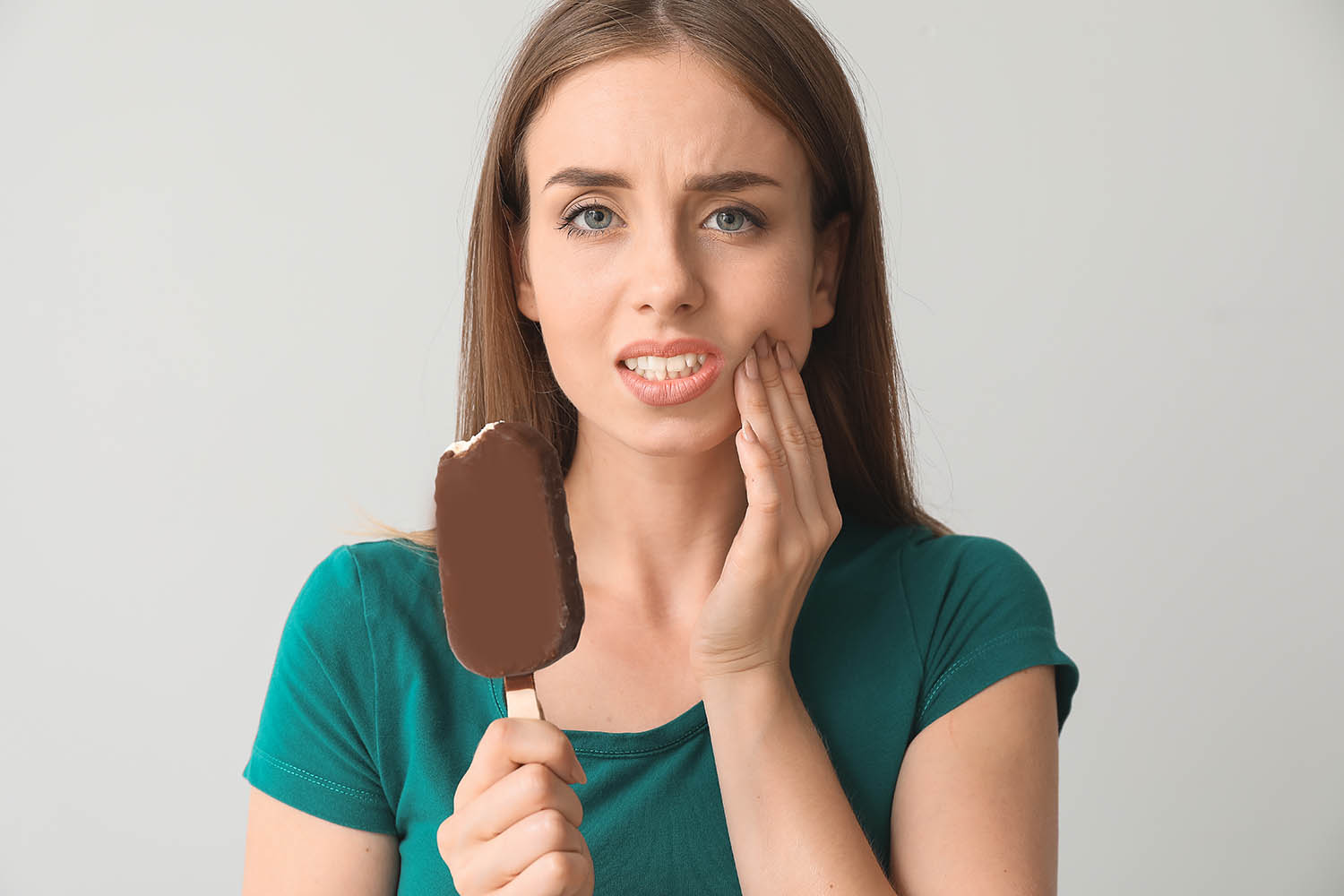Teeth whitening is a popular procedure that makes your smile dazzling. Some patients experience increased sensitivity during and after the procedure. Perhaps you have been thinking about whitening your teeth, but the thought of discomfort and increased sensitivity scares you?
Read this article to the end, and you’ll find answers to all your pressing questions. Let’s explore not just the facts about tooth sensitivity after whitening, but also the opinions and recommendations of recognized global experts and reputable dentists. Discover how to transform your smile without unpleasant surprises!
Contents:
- Is sensitivity normal?
- Why does this reaction occur?
- How long does it last?
- How can you reduce discomfort?
Increased tooth sensitivity after whitening – is it normal?
Yes, increased tooth sensitivity is a common and normal side effect of whitening. It’s a temporary side effect. Many dental experts have researched this issue, and most of them agree that short – term sensitivity after whitening is a typical body response.
According to the findings of a study, post – home whitening sensitivity is a common occurrence. It affects over 60% of patients, approximately two – thirds of those who undergo the procedure. Most experience mild discomfort. Some (every 25th person) report more pronounced sensitivity, including moderate to severe pain.Source: Jorgensen, M. G., & Carroll, W. B. (2002). Incidence of tooth sensitivity after home whitening treatment. Journal of the American Dental Association, 133(8), 1076-1082.
Causes of sensitivity:
Pre-existing sensitivity. Patients with pre-existing sensitive teeth with thin enamel are more prone to increased sensitivity after the procedure. Genetic factors predispose them to sensitivity. The patient’s lifestyle also affects its level.
Cavities, gum diseases. If a patient has cavities, whitening intensifies the pain. Whitening agents penetrate affected areas, causing pain or discomfort. In gum diseases, sensitivity increases due to exposure of tooth roots.
Enamel demineralization. The procedure can temporarily alter enamel structure, making it more porous. Whitening agents (hydrogen peroxide or carbamide peroxide) reach dentin, irritating nerves. It becomes more sensitive to irritants, such as hot or cold food.
Authoritative sources:
- Li, Y. (2012). Biological properties of peroxide-containing tooth whiteners. Food and Chemical Toxicology, 50(5), 1434-1442.
- Haywood, V. B. (2005). Treating sensitivity during tooth whitening. Compendium of Continuing Education in Dentistry, 26(9 Suppl 3), 11-20.
How long does increased sensitivity last?
According to the study by Leonard, R. H., Smith, L. R., Garland, G. E., & Caplan, D. J. (2004). Desensitizing agent efficacy during whitening:«The heightened sensitivity to irritants after dental bleaching with peroxide is typically a temporary phenomenon, usually resolving on its own within 2-3 days. Its duration is influenced by the patient’s characteristics and the whitening method used.If it persists beyond this period, it could be a sign of cavities, cracks, or dentin exposure. It is advisable to consult a dentist for assessment and advice. They will determine its cause and recommend appropriate treatment.»
How can you alleviate sensitivity after whitening?
Use desensitizing toothpaste and gels. Many dentists recommend using desensitizing toothpaste or gel before, during, and after the whitening procedure. These products contain potassium nitrate and fluoride. Potassium nitrate helps block channels in dentin, preventing whitening agents from reaching the tooth nerve, thus reducing sensitivity. Fluoride strengthens enamel, filling its microcracks, making teeth less prone to damage.
Take pain relievers. To ease discomfort, over-the-counter pain relievers like ibuprofen can be taken before and after applying the whitening agent. Dosage and duration should be discussed with a dentist.
Increase the interval between procedures. If gum irritation or sensitivity becomes too painful, taking a break for a few days allows gum tissue to heal, reducing discomfort. Results will still be achieved, but it might take more time.
Consume warm food and beverages. It’s advisable to avoid extremely hot or cold items in the initial days. These intensify sensitivity. Opt for items/drinks at room temperature.
Avoid acidic products. Acid can damage enamel and enhance painful reactions. Eliminating acidic foods reduces the risk of irritation.
Gentle brushing. Overzealous brushing exacerbates sensitivity in sensitive teeth. It’s better to use a toothbrush with soft bristles, avoiding aggressive pressure. A gentle approach helps preserve enamel and reduces discomfort.
Rinse with fluoride-containing mouthwashes. Non-prescription mouthwashes with fluoride can be used. They strengthen enamel, provide additional protection against irritants, remineralize teeth, and block pain signals directed to tooth nerves.
Use a straw for drinks. Using a straw minimizes contact of acidic or sweet (cold/hot) beverages with tooth surfaces, reducing the risk of irritation.
Authoritative sources:
- Haywood, V. B., & Caughman, W. F. (2005). Benefit-risk assessment of externally applied bleaching products. Journal of Esthetic and Restorative Dentistry, 17(1), 13-23.
- Reference: American Dental Association. (2009). Tooth Whitening/Bleaching: Treatment Considerations for Dentists and Their Patients. ADA Council on Scientific Affairs.
Professional-grade teeth whitening minimizes sensitivity
Professional teeth whitening under the supervision of an experienced dentist can significantly reduce tooth sensitivity.
Why?
An experienced dentist:
- Conducts a preliminary dental examination, identifying potential issues that might intensify the painful reaction, such as cavities or gum diseases. Treats these issues before applying whitening agents.
- Recommends custom-made trays. Standard clear trays may not fit the contours of the mouth properly, leading to contact between the whitening gel and gums, increasing sensitivity. Custom-fitted trays snugly adhere to the gums, whitening teeth safely without irritation.
- Adjusts the procedure’s duration, considering the enamel’s reaction to external irritants.
- Tailors the whitening agent’s optimal doses based on the enamel’s characteristics.
- Utilizes modern equipment, allowing the procedure to be completed in a single visit, for instance, by employing laser technology.
- Guides the patient in using custom trays at home. The entire process occurs under professional supervision.
At Solea Dental Spa, we provide advanced teeth whitening methods. We conduct professional in-office procedures and offer patients personalized solutions for at-home whitening. Our qualified doctors oversee the entire smile transformation process, providing detailed recommendations. Our equipment, methods, and expertise ensure the effectiveness and safety of the procedures for all our patients.

Q&A
What should you avoid after teeth whitening?To prolong the whiteness of your teeth, it’s advisable to avoid the following products and habits for at least the first week after the procedure:
- Smoking. Nicotine and other substances in tobacco dull and yellow the teeth.
- Dark fruits. For example, blueberries contain pigments that stain enamel.
- Red wine. Contains tannins that leave stains on the tooth surface.
- Coffee / tea. Contain dark pigments that discolor enamel.
- Dark cola. Carbonated beverages with added colorants lead to pigmentation.
- Professional whitening. Conducted by a dentist in the office, usually taking about an hour and providing visible results in a short period. The dentist utilizes special whitening gels and technologies.
- At-home whitening. This method allows individuals to apply whitening agents at home. These are available over the counter, such as kits with whitening gels and standard trays, or whitening strips. However, achieving results takes more time, and the effect is less noticeable compared to in-office whitening.
- At-home whitening with professional trays. This method involves using trays provided by the dentist at home. The patient wears them for a specific duration, following the dentist’s advice. The procedure concludes with professional whitening in the clinic.
It usually causes temporary sensitivity, which disappears within a few days after the procedure. However, if the whitening agent is applied incorrectly or too frequently, it can damage the enamel, leading to permanent sensitivity. It’s essential to consult a dentist. They will conduct an examination, suggest a treatment method, or provide relief options.

